FIAT 500
OVERVIEW

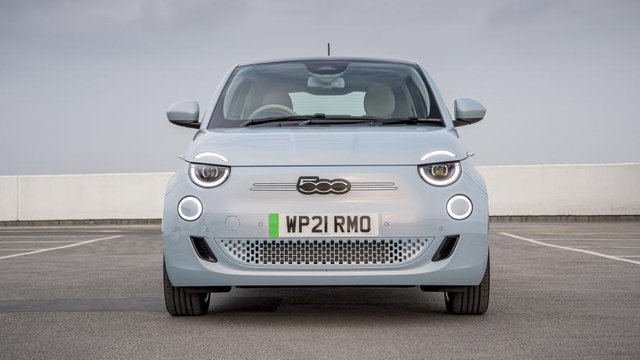
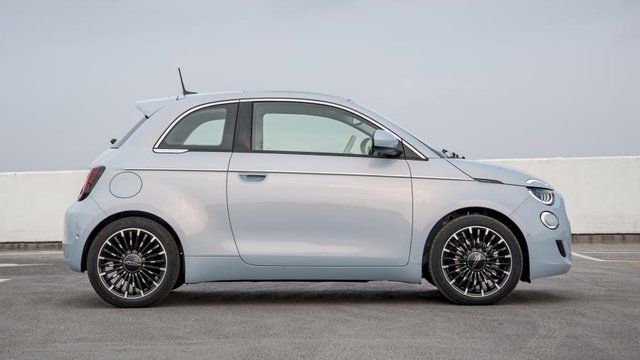
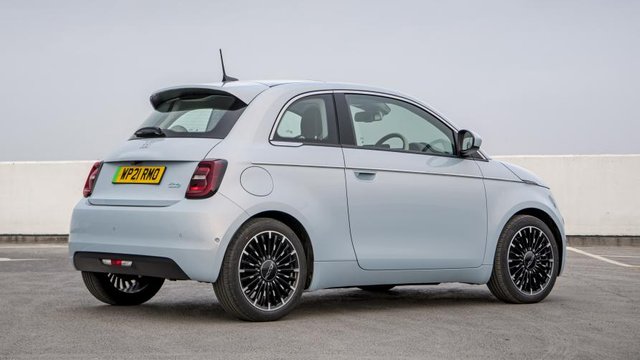
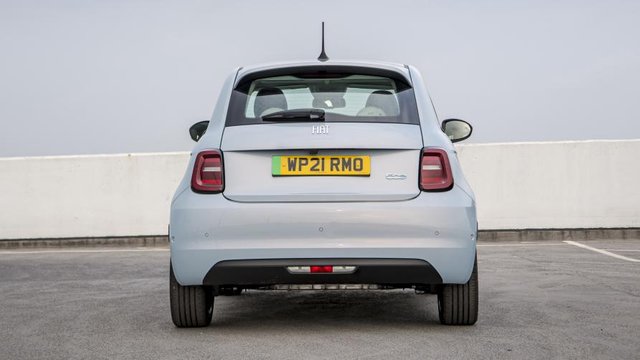
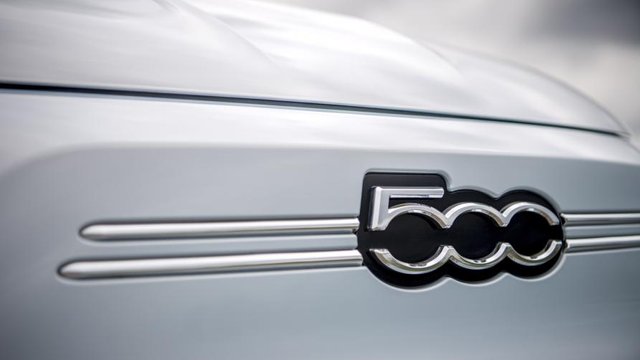
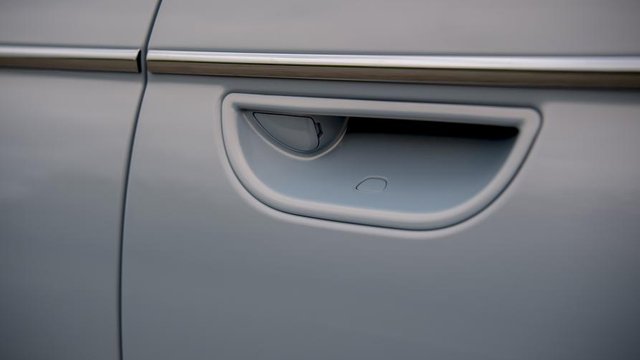
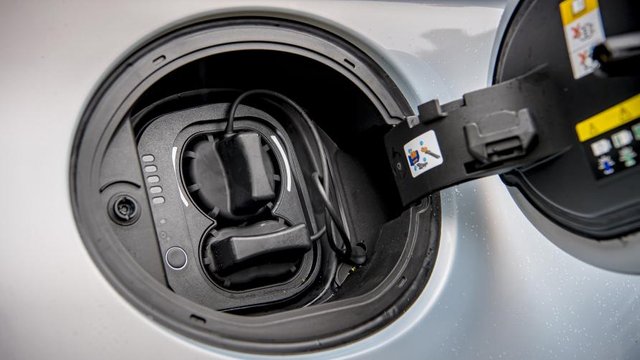
What is it?
It looks like a Fiat 500 all right. But you won’t find any component in this car that is in the existing one. The new 500 is bigger and uses a new interior, chassis, body and platform. Most obvious and significant, the propulsion is new too. It’s electric only.
It’s a posh and style-led little electric hatch, like a Honda e. Unlike with a Mini Electric or DS 3 Crossback, there’s no combustion version. Because this all-new platform is EV-only. That said, Fiat will continue to sell the now 13-year-old, much cheaper and incredibly successful petrol-powered 500 alongside the new EV for the “foreseeable”.
There is one significant option which none of the 500’s competitors offer. A colossal fabric sunroof that opens waaaay back and even drops the rear window. Since your EV is good for city skies, why not enjoy some of that sky yourself? It’s either the Fiat or an electric Smart ForTwo when it comes to enjoying the fresh air on your head, but the latter barely squeaks 90 miles of official range.
With all this underskin change, and no bulky engine/gearbox to accommodate, Fiat could have made the new 500 any shape that it pleased. Fiat Group’s studios worldwide got the chance to submit ideas for a complete design reinvention. After all that, in the end the company settled on familiarity: a retro modernized iteration of a 1957 shape.
What’s changed over the old car?
It’s 61mm longer, 56mm wider and 29mm taller than the petrol 500. The proportions are bolstered and the surfaces uncomplicated. Some of the detailing is plain terrific. It manages, we think, to steer clear of parodic cuteness. It’s a work of great confidence, and especially successful in brighter colors (from which there are many to choose).
But perhaps of lesser imagination. Can you think of another car that has retained the same rough outline while going through such transmogrification beneath: rear-engined to front-engined to electric? It argues against that old design rule that the look of an object should be honest to its inner story.
Why front-drive? Since Fiat was starting from scratch, it could have done a rear motor/RWD job like the Honda e. Or the original 500. But Fiat argues that FWD is what people are used to nowadays. For the same reason the electric motor’s accelerator calibration is much like a petrol, and the behavior in bends is familiar too. Why’s the charge port on the right-rear wing? That’s where you put in petrol. The canvas roof is a broadly similar idea to the existing 500’s, stretched between metal side rails, to preserve chassis rigidity.
So, yeah, it’s a Fiat 500, just as the Mini Electric is a Mini. Whereas a Honda e is to an almost absurd extent not a Honda Jazz.
What about range?
With an electric car, no one asks “What’ll it do?”, but only “How far’ll it go?” The new 500 comes with either a 24 or 42kWh battery, both provided by Samsung and slung low in the chassis. The latter option holds comfortably more energy than what’s in the Mini or Honda e, if less than a Zoe or the electric 208/Corsa/DS 3 triplets. Still, it’s enough for up to 199 miles WLTP. The cheaper 24kWh car claims 118 miles' WLTP, which is fine if it’s a second car that never ventures too far from home.
What's the verdict?
“Fiat's recast 500 is a solid, refined little electric car”
The 500 is small, but if you don’t need space it could be your only car. That’s because it’ll go far enough on a charge to make motorway trips tenable. Whereas the Honda e or Mini electric would have to be second cars to anyone who ever drives beyond conurbations rather than just within them. It’s not as fun to drive as those are, mind. It’s trying harder to feel normal. With a stylish, recognisable design and a quality feel. So the recipe’s been re-cast for health and welfare, but it still looks and tastes like la cucina della nonna.
DRIVING
What is it like to drive?
In the 42kWh 500 you’re propelled by a 117bhp motor. And the car’s not too heavy, at 1,365kg, so it gets to 62mph in 9.0 seconds. The entry level 24kWh car only has 94bhp, but it’s over 100kg lighter so takes just half a second longer to reach 62mph.
Acceleration is instantly responsive in that e-car way. But not so front-loaded with show-off urge that it snaps back your head or rips the front tyres out of a roundabout (both versions have the same 162lb ft of torque).
Performance tails away above 60mph, so don’t go doing ill-planned spontaneous overtakes at dual-carriageway speed. But when we first tested it abroad last year we had no trouble eventually hitting its 93mph limiter (the 24kWh is limited to 84mph).
It feels thoroughly stable and refined trucking down the highway at 70, though there is a fair bit of wind noise to contend with and you’ll munch through miles on your range countdown. Out in the countryside, even on lumpy hairpins, there’s enough traction and a broad resistance to understeer. But wooly steering and a jiggly ride means it isn’t as much fun to chuck down a B-road as a Mini Electric. It doesn’t feel at home out here.
Great in town, though, where the bouncy ride is less of a problem (and even somewhat beneficial over sleeping policemen/potholes). The steering’s light and direct enough that you might have to recalibrate your wrist muscles in the first few miles. But the wheel brings a quick (if slightly numb) answer.
You get three drive modes. ‘Sherpa’ dials back top speed and constrains the A/C, to eke the battery’s mileage right out. ‘Range’ is the one with a one-pedal driving style, bringing more regeneration when you lift off. Takes a bit of getting used to, especially with parking maneuvers – you might love it or you might not.
In Normal mode the brake and lifted throttle are more progressive, the regen is supposed to simulate engine braking but feels even lighter touch than that. Most of your regen in Normal mode will come from the brake pedal, and it’s an easy car to drive tidily.
The driver assist features – full Level 2 cruise and urban traffic-jamming, and lots of camera systems – sit around the front of the small-car pack. All the sensors are neatly hidden behind the ‘500’ badge, so no need for awkward looking appendages.
Overall, it feels like a solid, refined little car.
INTERIOR
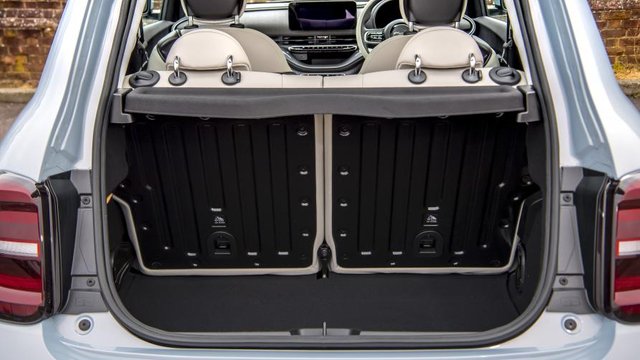
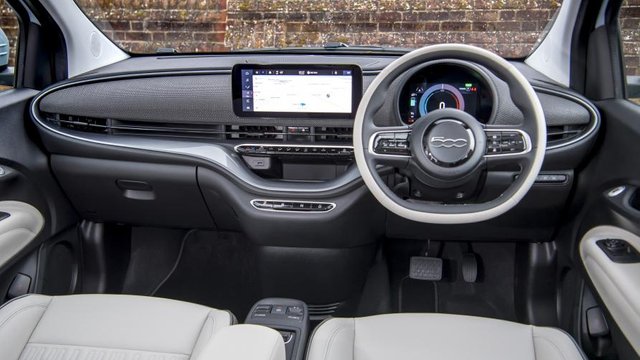
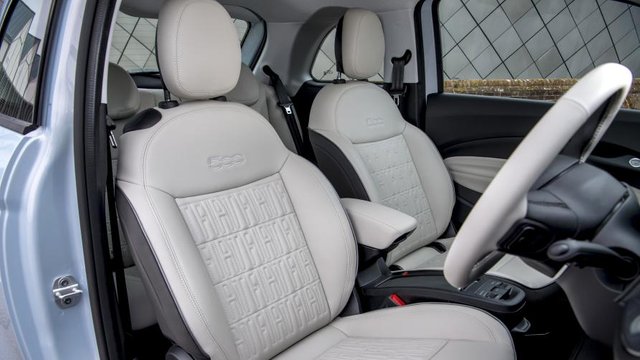
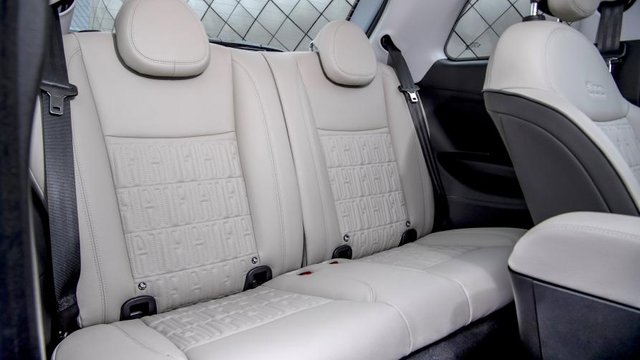
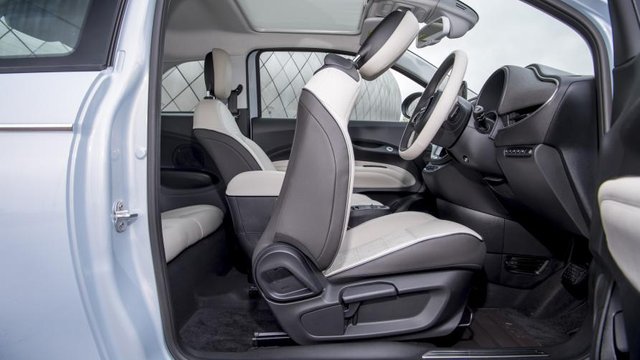
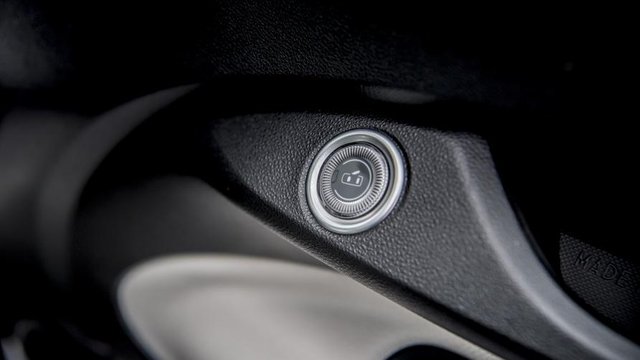
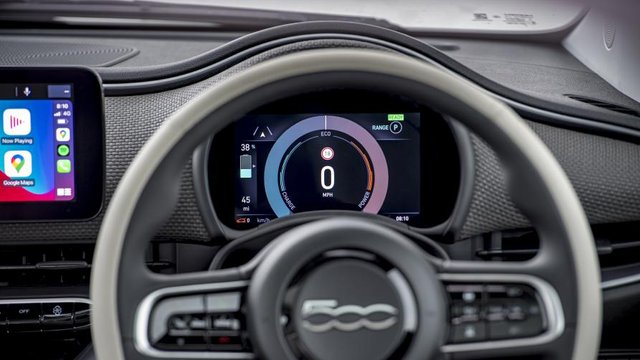
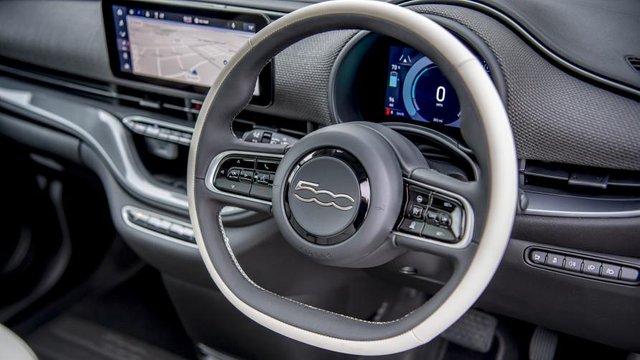
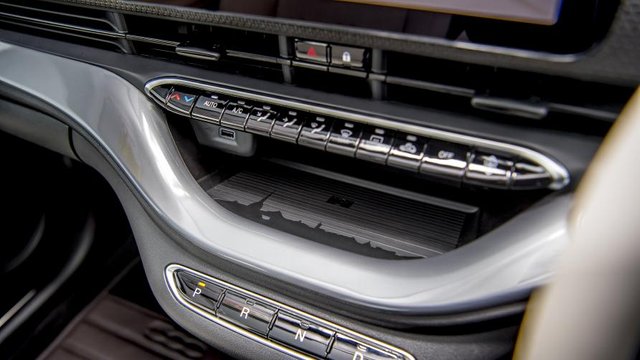
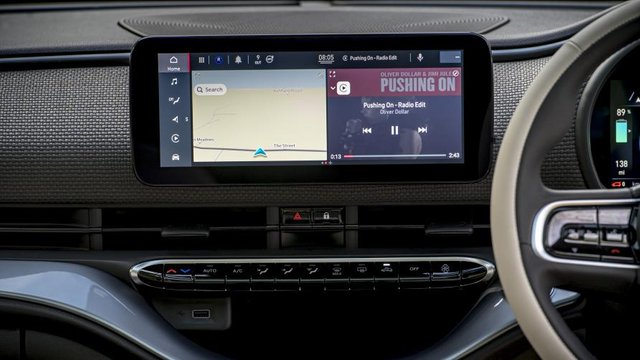
What is it like on the inside?
The organic shapes and textures of the seats and dash are pretty. They have a comforting familiarity to their 1957 and 2007 ancestors but a refreshing difference to everything else. It’s mostly well finished in here too, though not as expensive as a Mini or Honda e. The flip-down cup holder is especially flimsy.
A cyclops-eye instrument pod normally shows a round power/regeneration meter reminiscent of an old car’s speedo. But you can scroll through other configurations – a map, music, comms, trip computer and so on. The buttons on the two-spoke steering wheel are just that – actual buttons, not annoying little touchpads.
The center-dash touchscreen is fully connected and pretty much as app-tastic as the Honda’s. The screen has nice definition and logic too, though the interface is a bit fiddly in places. Connecting your phone is easy. It’s 10.25-inches in top-spec cars or 7-inches in mid-spec. Base-spec 500s get an inbuilt mount for your smartphone instead of a screen, which annoyingly points your phone off to the passenger seat.
The climate controls get their own off-screen buttons, hurrah. Below them is a phone cubby with wireless charging, and below these, the PRND buttons. OK, they’re buttons not a lever but if you’ve driven a petrol 500 this is at least where you naturally expect to find the control for going forward or back.
You sit perkily upright on good-looking seats with inadequate thigh support. Unlike the last 500 the steering wheel adjusts for both reach AND rake, which is great, but annoyingly the driver’s seat doesn’t adjust for height unless you spec the £300 ‘Comfort Seats Pack’ or go for the pricey ‘La Prima’ model. It’s a must have if you’re 6ft or just under, otherwise you sit way too high and your view out the windscreen is obscured by the rearview mirror’s chunky mounting.
The doors are big but light enough. The catch is electric but there are physical release levers too. Nowhere for the driver’s left foot, and the dashboard could do with padding (by the gear selection buttons) because you may want to rest your knee against it.
The back seat’s cramped – adults simply will not fit behind the driver, unless either driver or passenger is especially small – and the boot is a mediocre 185 liters. But there’s a lot of storage space around the cabin, on account of the absence of an exhaust pipe tunnel. And in some models you can fold the rear seats 50/50 to carry larger items.
BUYING
What should I be paying?
The entry level ‘Action’ hatch is £19,995 after the UK government’s £2,500 plug-in car grant is applied. Expect to pay around £265 a month if you decide to lease it. It’s the only version of the new 500 with the tiny 24kWh battery and isn’t available as a convertible. Key spec includes rear parking sensors, air conditioning, keyless go, the digital instrument cluster, lane keep assist, traffic sign recognition and autonomous emergency braking.
Spend another £3,500 or £60 per month and you can have a 500 Passion, with the 42kWh battery. This adds automatic aircon, the 7in touchscreen with wireless CarPlay/Android Auto, cruise control, 15in alloys and 50/50 folding rear seats.
The Icon model is next. Likely to be the UK’s bestseller, for £1,500 or £25 more per month than Passion it adds keyless entry, the big touchscreen, an ‘eco leather’ steering wheel and 16-inch alloys. Yet another £2,000/£40 per month – we’re up to around £30,000 now – buys you a 500 La Prima with every conceivable bell and whistle. The convertible top commands a £2,650 premium across the range.
Range is up to 199 miles for the big battery and 118 miles for the small battery, but as with any electric car, if you move with outside lane motorway traffic it’ll be significantly less than its WLTP number. Still, in a mix of city center, suburban, country work plus a stretch of motorway, the 500 proved largely as efficient as claimed, though the 24kWh model struggled to top 90 miles.
The big battery 500 can charge at a decent 85kW, giving you 100 miles in little over a quarter of an hour. Most rapid chargers in the UK are 50kW, though, so you’re as well saving your money and going for one of those. Incidentally, 50kW is the max charge rate of the small battery car.
Of course there’s a remote app that lets you monitor and control the car by phone. It can control charging to use off-peak electricity, send navigation destinations, find chargers and plot routes to take advantage. Normal EV stuff.
The warranty is for three years and unlimited miles, while the battery is warrantied for eight years and 62,000 miles. You’re looking at insurance group 14 for a base spec car, up to group 21 for a top-of-the-range convertible.
FOLLOW US ON FACEBOOK : @OfficialautoInfo
